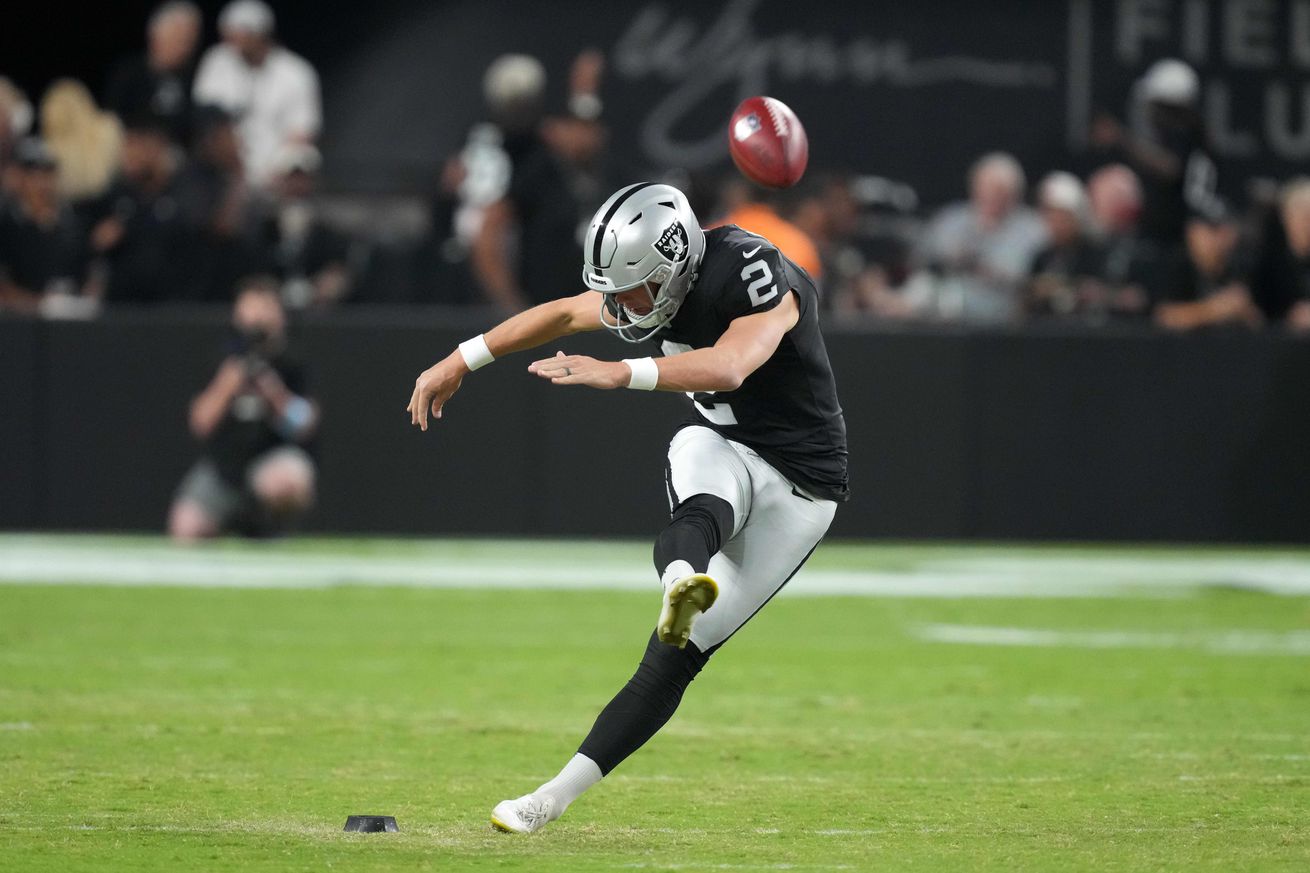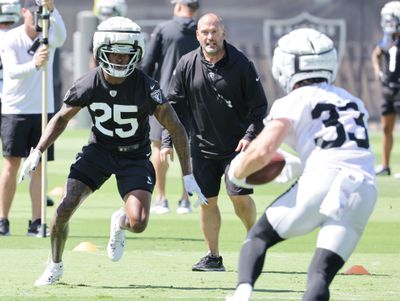
NFL makes touchback spot the 35-yard line in hopes of promoting more action in kickoff return game
Continued consistency and breaking a long drought.
That’s what’s on the line for the Las Vegas Raiders regarding the NFL’s 2025 special teams rule change this upcoming season.
With eyes on creating more action on kickoffs — something that was dampened with player safety in mind — the league moved up the dead ball spot on touchbacks to the 35-yard line. The rule changed, approved on April 1, is aimed in increasing the kickoff return rate which will have reverberating effects on all 32 special teams units in the league.
With this touchback spot change, the NFL has been projecting an increase in the return rate from ~33% in 2024 to between 60%-70% in 2025. There are some downstream aspects that could come into play in terms of field position, scoring, game management when you add that many plays. https://t.co/Y9Ph9ZARKk
— Kevin Seifert (@SeifertESPN) April 1, 2025
A 30 to 40 percent jolt would certainly add more excitement to the kickoff, an exercise that often resulted in both the kicking and receiving team watching the ball sail into the end zone or outside of the landing zone without much effort.
Originally devised to meet both player safety and scoring opportunities, NFL owners felt the dynamic kickoff rule (adopted in 2024) needed a tweak. Thus, the new 35-yard line dead ball spot to entice teams to be more tactical with the kick and return opportunities.
The other kickoff rules remain in place — such as alignment and landing zone — with the advanced dead ball spot the new addition.
Fortunately for Las Vegas, special teams coordinator Tom McMahon has an accurate and strong-legged place kicker in his group: Daniel Carlson.
While other teams may showcase a booming kickoff specialist — the Detroit Lions’ Jake Bate led the league with 85 touchbacks in 2024, for example — Carlson compiled 51 touchbacks which puts him 15th in the league in that regard. The 63.8 touchback percentage is below the league average (64.3) and the average distance Carlson’s kicks traveled (61) was also below the average.

Photo by Ethan Miller/Getty Images
But Carlson’s placement helped the coverage unit limit any type of return opportunities as the Silver & Black allowed the third-least return average at 24.8 while also showcasing the 13th fewest return opportunities (24).
Continued consistency from Carlson will help ensure the Raiders special teams unit remains strong in kickoff coverage.
Which brings us to the drought portion mentioned at the beginning of this piece.
When was the last time the Raiders housed a kickoff return?
Way back on October 16, 2011 when fleet-footed wide receiver and return specialist Jacoby Ford torched the Cleveland Browns for a 101-yard touchdown.
Behold:
#60Seasons Series ☠️
8 years ago today …
WR/KR Jacoby Ford returned a 101-yard kickoff for a TD versus the Cleveland Browns.
*Tied for third longest kickoff return in franchise history. #Raiders won 24-17 @ the Coliseum. @JacobyFord12 pic.twitter.com/KXw1qUsZ0U
— AFL Godfather ☠️ (@NFLMAVERICK) October 16, 2019
Ford, who played for the Silver & Black from 2010-13 after being selected in the fourth round (108th overall) of the 2010 NFL Draft, is the all-time franchise leader in kickoff return touchdowns with four.
The ongoing 14-year gap is the longest steak for the Silver & Black when it comes to housing kickoff returns. Before this current dry spell, it was from 1980 to 1988 and 1988 to 1995 as the two most recent gaps. Before that it was 1962 to 1975.
The Raiders’ kickoff return prowess has certainly lost its luster the past few seasons.
There were exciting moments, but fleeting. The leader of the group last season was veteran tailback Ameer Abdullah (nine returns for 296 yards, a long of 68 yards) with rookie running back Dylan Laube sprinkled in (six returns for 164 yards, long of 59). In 2023, veteran wide receiver DeAndre Carter had 11 returns for 262 yards and a long of 40. The 2022 season, Abdullah was lead returner with 26 attempts for 543 yards and a long of 33.
General manager John Spytek and head coach Pete Carroll did add some much-needed explosiveness and speed via the 2025 NFL Draft. And there’s a group of prospects from that class who can help bolster McMahon’s unit.
#RaiderNation it’s time to introduce you to Touchdown Tommy Mellott @KyleBrandt | @Tommy_Mellott pic.twitter.com/2VSVEFXXcy
— Good Morning Football (@gmfb) May 8, 2025
Las Vegas’ third-round and fourth-round choices in cornerback Darien Porter and wide receiver Dont’e Thornton Jr., for example, have the size, speed, and length to be effective and explosive gunners on coverage units.
Sixth-round pick Tommy Mellott is an intriguing chess piece for McMahon, too. The Montana quarterback has an absurd athletic profile and has the sudden speed (4.39 40-yard dash time) and elusiveness to potentially be an impact return man for the Raiders. Expected to convert to a wide receiver, Mellott remains a position-less type for now. But as I’ve written many times, the easiest path to an NFL 53-man roster is special teams.
“I wouldn’t pigeon hold him right now,” Raiders director of college scouting Brandon Yeargan, said of Mellott in the post-draft press conference. “I would say we view him as a receiver that’s going to have a lot of value in the kicking game potentially as a returner, as a cover player, maybe he plays some quarterback too. … He’s a unique guy. His testing numbers were through the roof.”
Point After
Carlson, along with special teams battery mates punter AJ Cole III and long snapper Jacob Bobenmoyer are all slated to hit unrestricted free agency next offseason — absent new contracts.
Carlson is playing on the final year of a four-year, $18.4 million extension ($5.15 million cap number in 2025) while Cole is at the end of his four-year, $12 million extension ($3.733 million cap number in 2025). Bobenmoyer, on the other hand, is on the last stage of his three-year, $3.815 million deal ($1.255 million cap number in 2025).
The trio have been one of the top special teamers in the league and it’ll be interesting to see if Spytek and Carroll extend them. At age 30, 29, and 27 respectively, Carlson, Cole, and Bobenmoyer are in the prime of their careers.